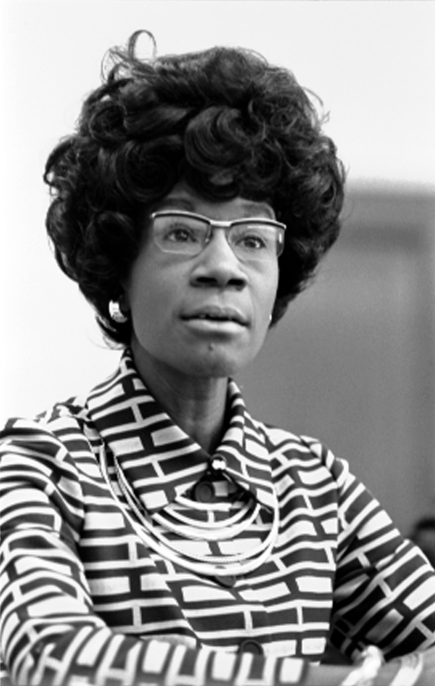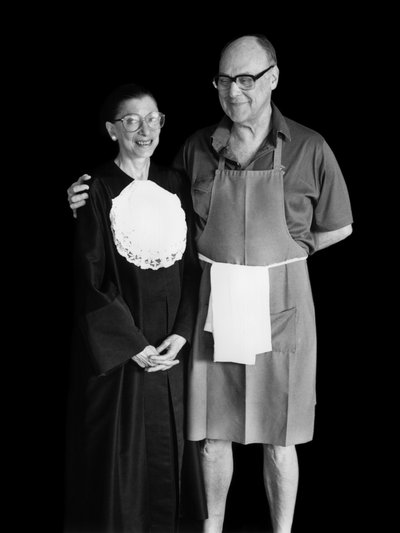
Shirley Anita St. Hill was born on November 20, 1924 in Brooklyn, New York, to working-class immigrants from Guyana and Barbados. She spend much of her childhood in Barbados with her sisters and grandmother, and acquired a slight British accent that lasted the rest of her life. She attended school in Barbados as a girl and moved back to Brooklyn to excel in her studies. She graduated from Brooklyn’s Girls’ High in 1942, and from Brooklyn College in 1946 with honors. In 1949, she married her first husband, Conrad Q. Chisholm. Three years later, Shirley Chisholm earned an M.A. in early childhood education from Columbia University. She was an educational consultant for New York City’s Division of Day Care from 1959 to 1964, when she was elected to the New York state legislature, the second African–American woman to serve in Albany.
Barbara Winslow wrote in her biography of Chisholm: “Albany at that time was not particularly welcoming to African Americans, and in the mid 1960s, respectable women did not go out to restaurants or bars on their own…Once the day’s legislative session ended, the male legislators would go off to bars, movies, restaurants and clubs. Not a single one of Chisholm’s colleagues ever invited her to their social gatherings.”
In 1968, Chisholm was the first African-American women to run for Congress. Chisholm faced Republican–Liberal James Farmer, one of the principal figures of the civil rights movement, a cofounder of the Congress for Racial Equality, and an organizer of the Freedom Riders in the early 1960s. Although they had similar position on most of the issues, Farmer maintained that “women have been in the driver’s seat” in black communities for too long and that the district needed “a man’s voice in Washington,” not that of a “little schoolteacher.” Chisholm won the general election by 67 percent.
Not bad for a little schoolteacher.
On March 26, 1969, she gave her first floor speech, and spoke vehemently against the war in Vietnam. From 1971 to 1977 she served on the Committee on Education and Labor during which time she became a founding member of the Congressional Black Caucus and the Congressional Women’s Caucus. In 1977, she became the first black woman to serve on the Rules Committee, and from 1977 to 1981, Chisholm served as Secretary of the Democratic Caucus.
In 1972, she became the first black woman to run for the Democratic nomination for president. At the Democratic National Convention she received 152 delegate votes, or 10 percent of the total, a respectable showing given her modest funding. She did not have the full backing of the CBC due to opposition from male members, and noted: “Black male politicians are no different from white male politicians. This ‘woman thing’ is so deep. I’ve found it out in this campaign if I never knew it before.”
Shirley Chisholm said of her bid for the presidency, “I ran because somebody had to do it first. … I ran because most people think the country is not ready for a Black candidate, not ready for a woman candidate.”
In 1977 she divorced her first husband and married Arthur Hardwick, Jr., a New York state legislator. Chisholm left Congress in 1982 and accepted a teaching position at the women’s college Mount Holyoke. “Shirley Chisholm would like to have a little life of her own,” she told the Christian Science Monitor. Still, after leaving Congress, she cofounded the National Political Congress of Black Women, campaigned for Jesse Jackson’s presidential bids in 1984 and 1988. She declined president Bill Clinton’s nomination for U.S. Ambassador to Jamaica due to health issues, and eventually retired to Florida in 1991, where she died on January 1, 2005.
Barbara Winslow wrote of Chisholm’s childhood in Barbados: “Grandmother’s large house sat on a plot that provided the family’s food: Sweet potatoes, yams, corn, tomatoes and root vegetables. The waters around the island provided abundant seafood, including the Barbadian staple flying fish.”
The recipe I’ve chosen is for that staple that Shirley Chisholm likely ate many times as a young girl, with her impressive future lying ahead of her. Flying fish with cou-cou is “the national dish of Barbados.”
Continue reading →



